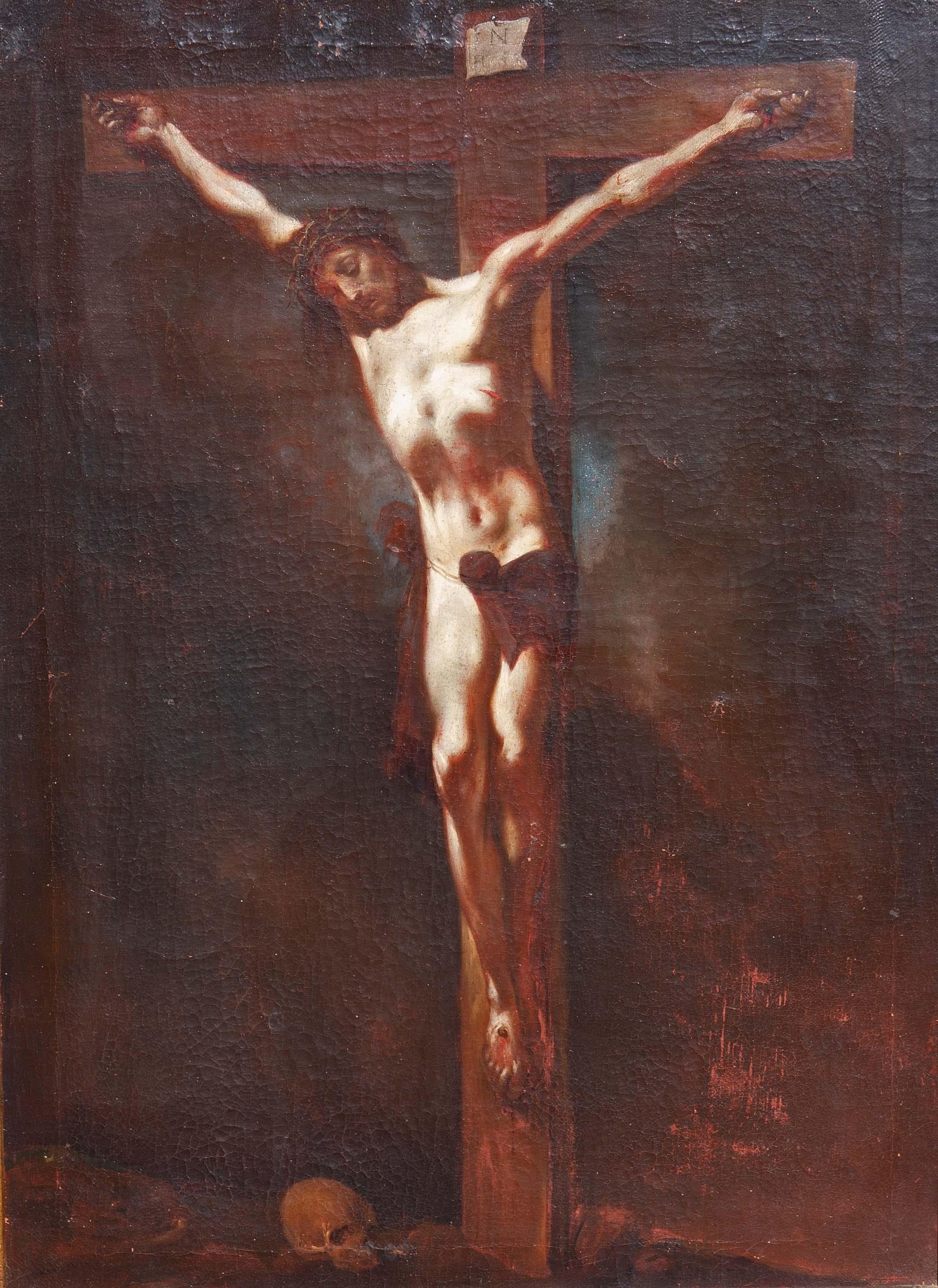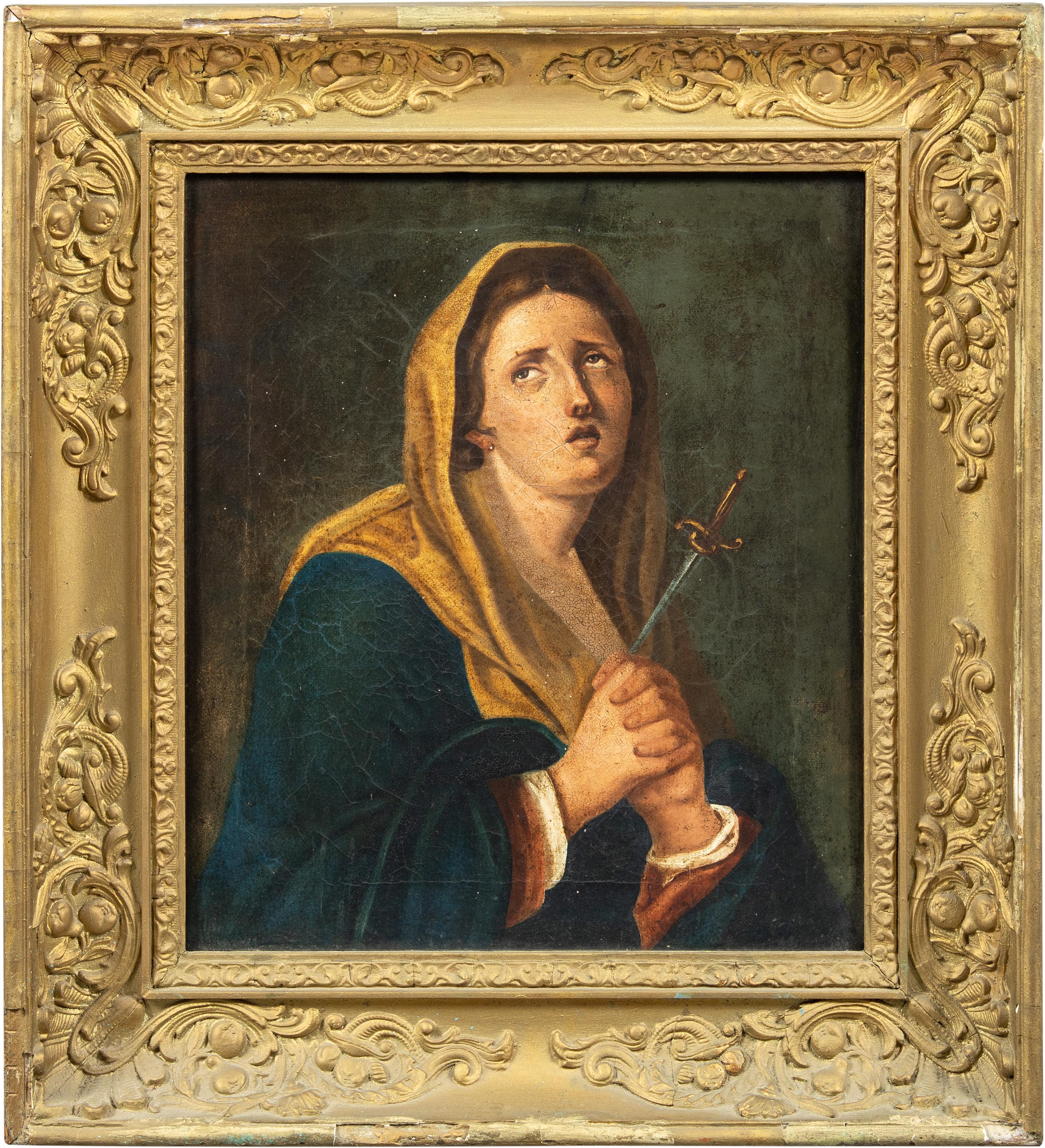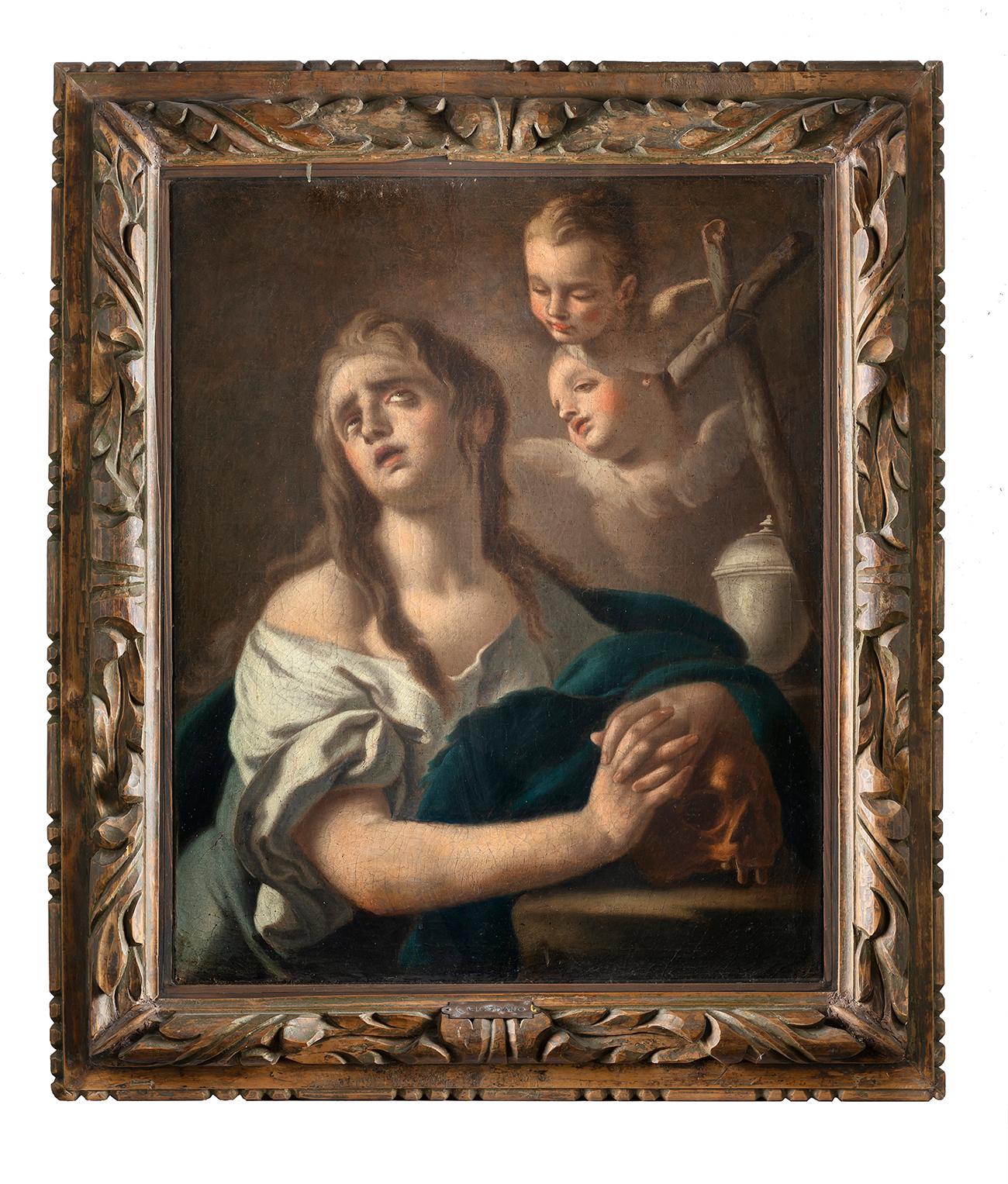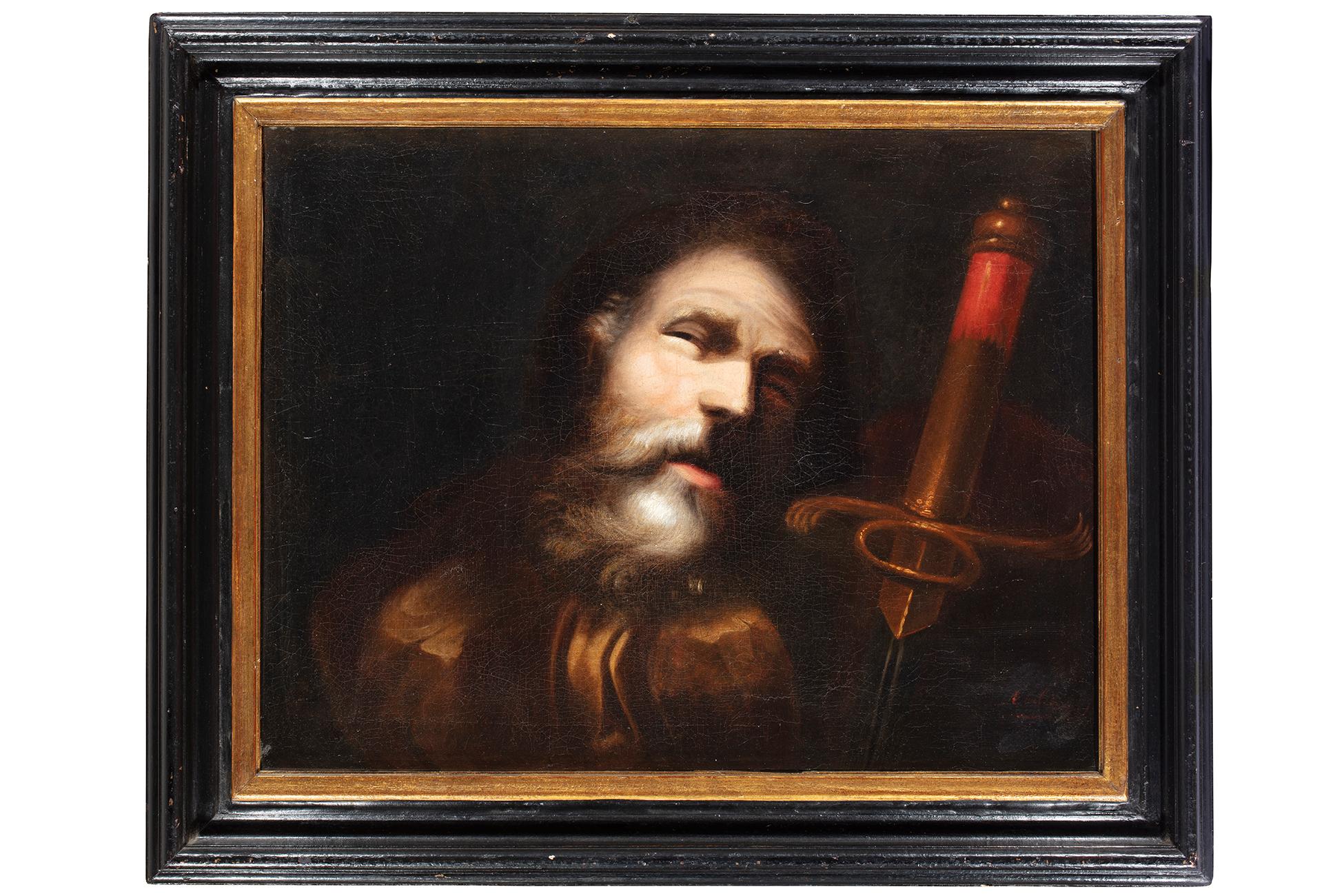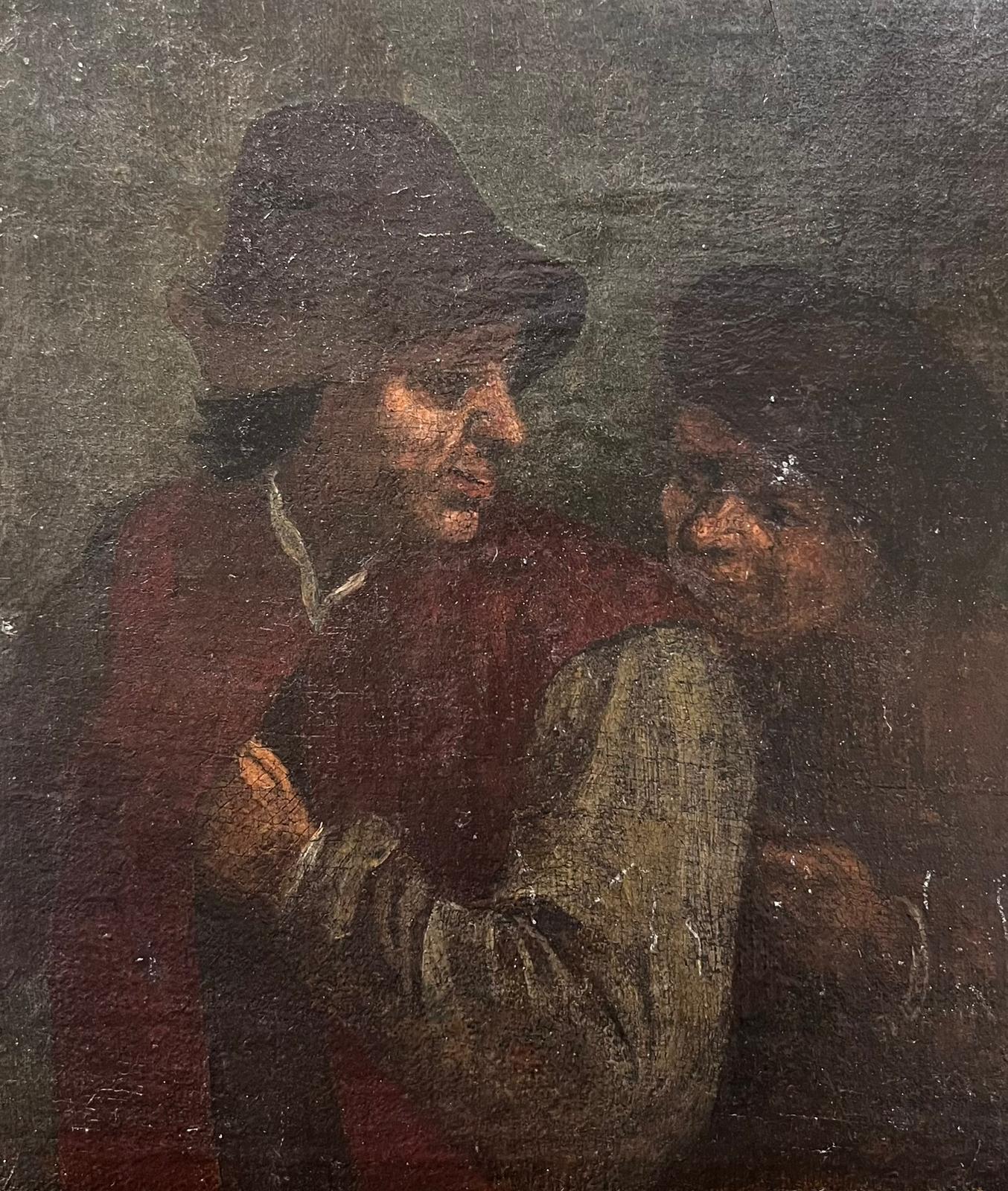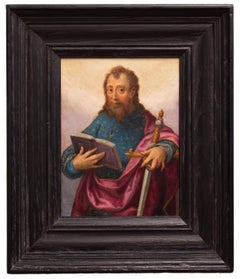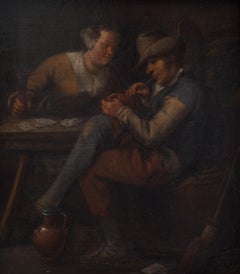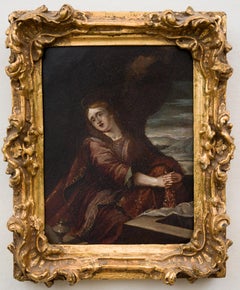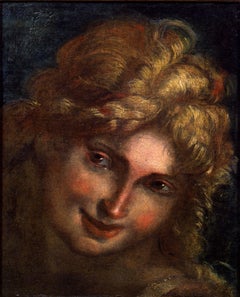
Alessandro Gherardini (studio) - Ascension of the Virgin, Free Shipping
Video Loading
Want more images or videos?
Request additional images or videos from the seller
1 of 13
Alessandro Gherardini (studio) - Ascension of the Virgin, Free Shipping1700s
1700s
About the Item
- Creation Year:1700s
- Dimensions:Height: 33.67 in (85.5 cm)Width: 26.97 in (68.5 cm)
- Medium:
- Movement & Style:
- Circle Of:Alessandro Gherardini (1655 - 1726, Italian)
- Period:
- Condition:Fully restored by professional art conservator 2021. Some small retouches in some places, please contact us for UV/IRR images. The frame has a fine patina, need renovation to be in perfect condition.
- Gallery Location:Stockholm, SE
- Reference Number:1stDibs: LU144529009112
About the Seller
5.0
Platinum Seller
These expertly vetted sellers are 1stDibs' most experienced sellers and are rated highest by our customers.
Established in 2020
1stDibs seller since 2020
115 sales on 1stDibs
Associations
International Confederation of Art and Antique Dealers' Associations
More From This SellerView All
- St Paul With Sword and Book, Mannerist School, Oil on CopperLocated in Stockholm, SEMannerism, derived from the Italian term "maneria," which simply means "style," was an artistic movement that emerged in the later years of the Italian High Renaissance, around 1520, and extended into the early 17th century. It is often referred to as the "stylish style" due to its emphasis on self-conscious artifice rather than realistic depiction. Historians debate whether Mannerism should be classified as a style, a movement, or a period. In contrast to the harmonious ideals embraced by renowned artists such as Raphael, Michelangelo, and Leonardo da Vinci, Mannerist painters took a step further and created compositions that were almost bizarre. They introduced fresh color schemes, elongated proportions, and exaggerated anatomy of figures, portraying them in convoluted and serpentine poses. These artists skillfully exhibited their techniques and abilities, aiming to evoke a sense of sophisticated elegance. Among the notable Mannerist painters are Jacopo da Pontormo, Bronzino, Lavinia Fontana...Category
17th Century Old Masters Figurative Paintings
MaterialsCopper
$5,678 Sale Price20% OffFree Shipping - The Card Players by a Flemish 1600s ArtistBy Flemish School, 17th CenturyLocated in Stockholm, SEFlemish 1600s School The Card Players oil on oak panel panel dimensions 22.5 x 20 cm frame included Provenance: From a Swedish private collection. Condition: Flat and stabl...Category
17th Century Old Masters Figurative Paintings
MaterialsOak, Oil, Panel
- Flemish School, 17th Century, Mary MagdaleneLocated in Stockholm, SEFlemish School, 17th Century Mary Magdalene oil on copper 17th century plate dimensions 23 x 17 cm frame 27 x 22 cm Restored by professional art conservator 2022. Provenance: ...Category
17th Century Old Masters Figurative Paintings
MaterialsCopper
- Oil Sketch for the Painting "Gustavus II Adolphus before the Battle of Lützen"Located in Stockholm, SEThis is an oil sketch for the famous painting "Gustavus II Adolphus before the Battle of Lützen" today in the Göteborgs Konstmuseum's collection. There is something special with an ...Category
1890s Portrait Paintings
MaterialsCanvas, Oil
- The story of the Belle époque in one portrait by John da CostaBy John da CostaLocated in Stockholm, SEThe story of the Belle époque in one portrait When it comes to glamour, no period in the history of art can compete with the Belle époque. A generation of highly talented artists developed new styles of portraiture that not only showed fashionable taste and elegance – but also the tensions and changes to come that lured behind the surface of this glittering age. One of them was John da Costa (1867–1931) also – involuntarily – known as “The John Singer Sargent of children’s portraits”. The time period between the Franco-Prussian war of 1871 and the outbreak of the first world war of 1914 was an unusually peaceful and prosperous one – at least on the surface. The decades leading up to the largest and most destructive war the world had ever seen were characterized by a combination of industrial boom, cosmopolitan life, the birth of modern art and literature and political movements that eventually would change society forever. In other words, it was a melting pot for many phenomenon and societal transformations that we still today are affected by, not least in the form of art. Breaking away from the more conservative academic traditions, new styles of painting of varying radicality emerged and both chocked and delighted audiences. When it comes to portraiture, names like John Singer Sargent and Anders Zorn conquered international audiences with their electrifying paintings of high society, politicians and celebrities of the era. Their erringly light brushwork created an almost dreamlike atmosphere where everything from the sheerness of dress fabrics, subtle lights of ballroom evenings and dense psychological facial expressions vibrated with the zeitgeist. Initially controversial and breaking with traditional expectations, eventually it was this kind of portraits that became the “dernier cri”, a hallmark of good taste and ultimately the very essence of the Belle époque. And it is here, in the vibrant field of portraiture, that John da Costa finds his place and artistic calling. Born in Teignmouth in southern England, a career in the arts was not an obvious choice for John da Costa. Teignmouth, however, beautifully located in the Devon landscape with its proximity to the roaring sea and picturesque fields, was a small fishing town far away from urban life and the art scene. It appears that it was rather early on that his artistic talent became evident, and after studies in Southampton and Paris he eventually established himself as a prominent painter who would soon achieve an international reputation. Interestingly, he was for a period a member of the Newlyn artist colony in Cornwall, not too far from his hometown, where the natural light inspired numerous artists to explore a new realism “En plein air”, not unlike the more famous Barbizon School in France. However, this path, although certainly an important experience, was not right for da Costa who soon searched for other artistic inspiration. Fellow artist Norman Garstin noted with grief his departure from the colony, but new adventures were on their way and they would take on the form of portraiture. It is hard for us today to understand how esteemed and culturally important the genre of portraiture was during this time. Portraits were constantly discussed and commented on, not only in their function of depicting a person but also as an artistic expression of its own, expanding the notion of what art was capable of documenting in terms of the human psyche, the mood of the time and of course the specific temperament and visions of the artist. Furthermore – and not unimportant – it was also an especially lucrative genre for a younger artist, who could more easily get an income through portraits while at the same time challenging themselves artistically. Painting portraits demanded social skills, patience to deal with customers and a real understanding of different identities, ideals, fashions and particular wishes that each sitter might have. And then, the opinions of art critics and audience was also important to consider. In other words, portraiture is far from only capturing the likeness of a person – it is a deeply psychological, artistic and entrepreneurial endeavor. John Singer Sargent is perhaps the prime example of the complexity of Belle époque portraiture; it seems that he with a few meticulous but light brushstrokes could express an entire identity and of person and an era in a portrait. Perhaps this is why his style became so admired, and why so many artists were inspired to paint in a similar manner. Da Costa was far from alone in his fascination for swift, elegant brushwork in Sargent’s manner – but he was unusual in his ability to interpret it in his own distinct way. Judging from where he received commissions, da Costa was a true cosmopolitan. He was as comfortable working in London as he was in Scotland, France and the US, where some of his most prestigious works were produced. For a number of years, he ran his own art school in Kensington in collaboration with his friend Phil Whiting from the Newlyn colony. The list of famous clients was impressive, among them we find the secretary of the treasury Andrew W...Category
Early 1900s Figurative Paintings
MaterialsCanvas, Oil
$15,200 Sale Price20% Off - Moments of Reflection Depicting a Woman Sitting by the Fire, Original Oil PaintBy Sam UhrdinLocated in Stockholm, SEWe are pleased to present a captivating painting by the artist Sam Uhrdin (1886-1964). This beautiful artwork depicts a woman from Dalarna, sitting in front of a warm, glowing fire. The entire painting is bathed in a soft, radiant light, particularly illuminating her face and traditional white/red attire. The woman appears contemplative, lost in thought, perhaps thinking of someone dear to her heart. She is depicted in a kitchen, taking a moment to relax after a day's chores in her home. Sam Uhrdin's artistic journey began in the early 1900s, he traveled to Stockholm in 1903 to further continue his studies in painting. He worked as a painter during the day and attended various evening schools in the evenings. In 1906, he journeyed to America to work as a sign painter, but he mainly ended up working as an upholsterer. Returning to Leksand in 1909 via London and Paris, his artistic talent gained recognition, and with the help of some patrons, he began studying at the Royal Academy of Fine Arts in 1911, occasionally attending Althin's painting school in Stockholm. Financial circumstances cut his study time short, and his skill as a portrait painter earned him numerous portrait commissions, which further occupied his time. In 1921, Uhrdin received a scholarship from the Royal Academy, enabling him to embark on a study trip in 1922 to the Netherlands, Belgium, and France, which he had to cut short due to his wife's illness. He later visited places like Spain and Portugal. Uhrdin's breakthrough came with his portrait of the former Prime Minister Nils Edén, which he executed in 1919. In 1921, he portrayed the participants of the Swedish Academy. Among other representatives of official Sweden captured by Uhrdin were Gustav V, Manne Siegbahn, Ludvig Stavenow, and bishops Gottfrid and Einar Billing. In 1932, he held a solo exhibition at Konstnärshuset in Stockholm, and he participated in various exhibitions, including the Swedish Artists' Association in Stockholm in 1917, Swedish Art at Valand-Chalmers in Gothenburg in 1923, Dalarna Artists displayed at Liljevalchs Konsthall in 1936, and the National Museum's traveling exhibition "Barnet i konsten" (Children in Art...Category
1940s Realist Portrait Paintings
MaterialsCanvas, Oil
You May Also Like
- Head of an AngelLocated in New York, NYProcaccini was born in Bologna, but his family moved to Milan when the artist was eleven years old. His artistic education was evidently familial— from his father Ercole and his elder brothers Camillo and Carlo Antonio, all painters—but his career began as a sculptor, and at an early age: his first known commission, a sculpted saint for the Duomo of Milan, came when he was only seventeen years old. Procaccini’s earliest documented painting, the Pietà for the Church of Santa Maria presso San Celso in Milan, was completed by 1604. By this time the artist had made the trip to Parma recorded by his biographers, where he studied Correggio, Mazzola Bedoli, and especially Parmigianino; reflections of their work are apparent throughout Procaccini's career. As Dr. Hugh Brigstocke has recently indicated, the present oil sketch is preparatory for the figure of the angel seen between the heads of the Virgin and St. Charles Borrommeo in Procaccini's altarpiece in the Church of Santa Afra in Brescia (ill. in Il Seicento Lombardo; Catalogo dei dipinti e delle sculture, exh. cat. Milan 1973, no. 98, pl. 113). As such it is the only known oil sketch of Procaccini's that can be directly connected with an extant altarpiece. The finished canvas, The Virgin and Child with Saints Charles Borrommeo and Latino with Angels, remains in the church for which it was painted; it is one of the most significant works of Procaccini's maturity and is generally dated after the artist's trip to Genoa in 1618. The Head of an Angel is an immediate study, no doubt taken from life, but one stylistically suffused with strong echoes of Correggio and Leonardo. Luigi Lanzi, writing of the completed altarpiece in 1796, specifically commented on Procaccini's indebtedness to Correggio (as well as the expressions of the angels) here: “Di Giulio Cesare...Category
17th Century Old Masters Figurative Paintings
MaterialsCanvas, Paper, Oil
- Old Master Painting of Christ 17th/18th Century Italian SchoolLocated in Rochester, NYThe crucifixion of Crist Italian school 17th or 18th century. Beautiful detail in the face and hands. The lighting makes the figure of Crist seem to glow. In a good quality later frame. Presented by Joseph Dasta Antiques...Category
18th Century Old Masters Figurative Paintings
MaterialsOil, Canvas, Fabric
- Religious painter (Italian school) - Early 19th figure painting - Virgin MadonnaLocated in Varmo, ITItalian painter (early 19th century) - Mater Dolorosa. 37 x 33 cm without frame, 53 x 48 cm with frame. Ancient oil painting on canvas, in an ancient carved and gilded wooden frame...Category
Early 19th Century Old Masters Figurative Paintings
MaterialsOil, Canvas
$1,528 Sale Price22% OffFree Shipping - Answer WithinLocated in Ibadan, OyoPainting Ships in a well-protected tube from Nigeria This work is unique, this is not a print or other type of copy. Accompanied by a Certificate of Authenticity (Issued by the Gallery)Category
21st Century and Contemporary Old Masters Portrait Paintings
MaterialsCanvas, Oil
- 17th Century Italian Old Master Oil Painting Moses Striking Water from the RockBy Pier (Pietro) DandiniLocated in Cirencester, GloucestershireMoses Striking Water from the Rock; Circle of Pietro Dandini, Italian 1646-1712 Italian School, late 17th century oil on canvas, framed framed: 3...Category
Early 18th Century Old Masters Portrait Paintings
MaterialsOil, Canvas
- Large 18th Century European Oil Painting Portrait of Noble Lady Lace CollarsLocated in Cirencester, GloucestershirePortrait of a Noble Lady European School, 18th century oil on canvas, framed framed: 37.5 inches canvas: 30 x 24.5 inches provenance: private collection, France condition: very good ...Category
18th Century Old Masters Portrait Paintings
MaterialsCanvas, Oil

